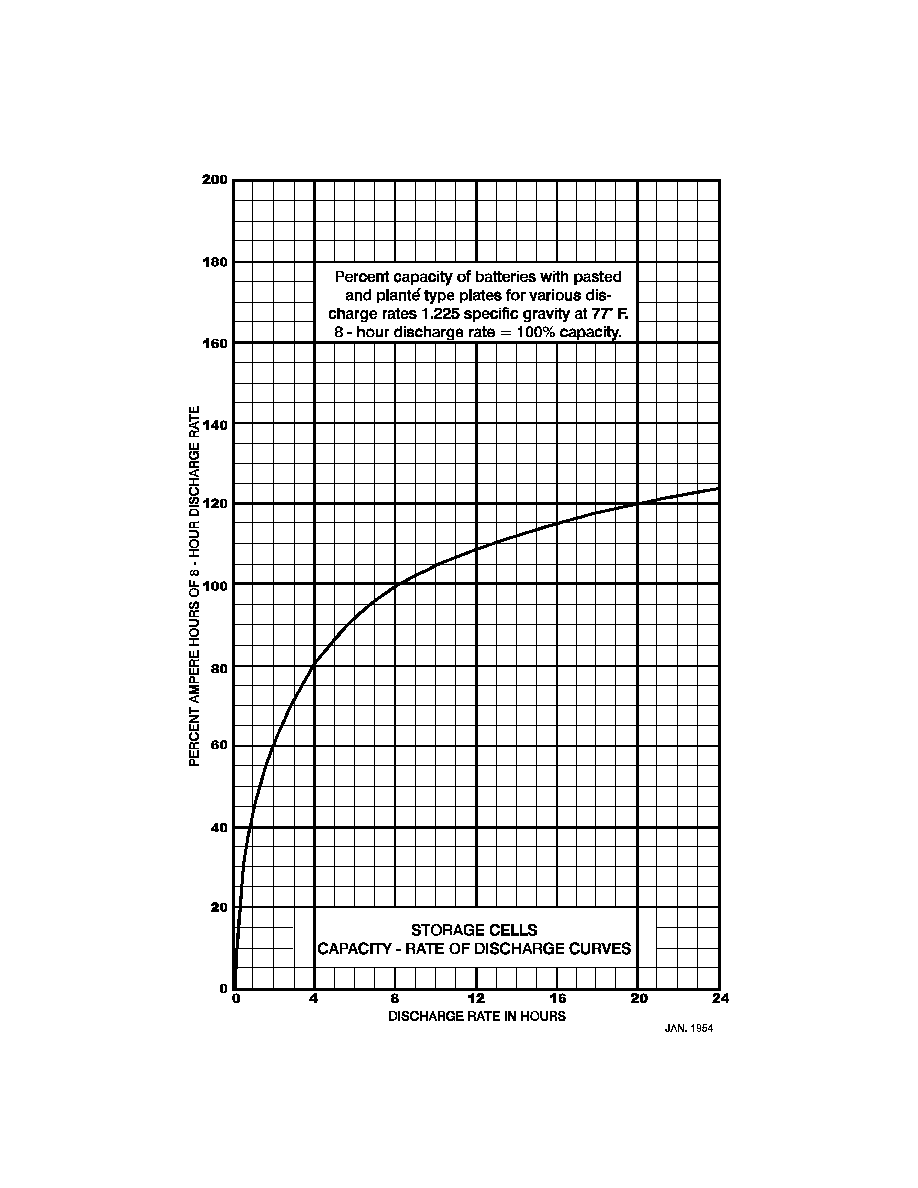

28
Rev.12/31/97
4. OPTIONAL INSTRUCTIONS LEAD-CALCIUM BATTERIES
4.1 FLOAT CHARGE
4.1 FLOAT CHARGE
For a typical, 60-cell, lead-calcium battery floated at 2.17 volts per cell and
equalized at 2.33 volts per cell, the normal voltage range would be 130.2 to
139.8 volts. At many locations, the higher voltage cannot be tolerated for
the 6 or more days required for equalizing, particularly where the battery is
a source of power for electronic equipment. Lead-calcium batteries
equalized at 2.33 volts per cell, the normal voltage range would be 130.2 to
139.8 volts. At many locations, the higher voltage cannot be tolerated for
the 6 or more days required for equalizing, particularly where the battery is
a source of power for electronic equipment. Lead-calcium batteries
do not
require equalizing if
floated between 2.2 and 2.25 volts per cell. This voltage
would give a 60-cell battery a voltage between 132 and 135 volts. Lead-
calcium batteries have a distinct advantage when constant voltage is
desirable. To match the battery voltage to the rated voltage of the
equipment served, the number of cells should be selected to provide
optimum voltage when floated to eliminate the equalizing charge. This
procedure should be considered when replacing batteries. The table below
calcium batteries have a distinct advantage when constant voltage is
desirable. To match the battery voltage to the rated voltage of the
equipment served, the number of cells should be selected to provide
optimum voltage when floated to eliminate the equalizing charge. This
procedure should be considered when replacing batteries. The table below
lists some common voltage ranges.
Table 2. - Common voltage ranges.
Numb
er
of
Cells
er
of
Cells
Voltage Range
(volts)
12
23*
24
23*
24
58*
59*
59*
60
116*
120
116*
120
26.4 to 27.0
50.6 to 51.75
52.8 to 54.0
127.6 to 130.5
129.8 to 132.75
132.0 to 135.0
225.2 to 261.0
264.0 to 270.0
225.2 to 261.0
264.0 to 270.0
* The low battery alarm must be calibrated to reflect the lower number of cells.
4.2 INITIAL CHARGE
4.2 INITIAL CHARGE
An initial charge is not required because the battery will charge properly at
the above voltages. After about 2 weeks, initial cell voltages and specific
gravity readings should be recorded on form POM-133A. Increase the
voltage to 2.33 to 2.38 volts per cell (connected equipment permitting) if the
initial charge must be completed sooner.
the above voltages. After about 2 weeks, initial cell voltages and specific
gravity readings should be recorded on form POM-133A. Increase the
voltage to 2.33 to 2.38 volts per cell (connected equipment permitting) if the
initial charge must be completed sooner.
4.3 VOLTAGE READINGS
4.3 VOLTAGE READINGS
A. Each Shift (Attended Stations) or During Routine Inspections (Unattended Stations)
A. Each Shift (Attended Stations) or During Routine Inspections (Unattended Stations)
Check the charger panel voltmeter to determine if the battery is being